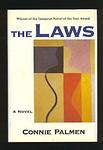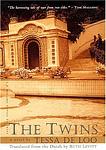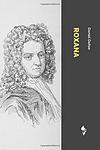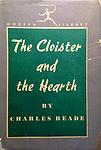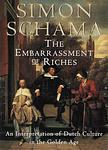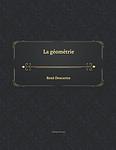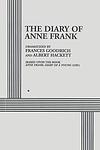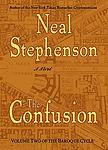The Greatest "Netherlands" Books of All Time
Click to learn how this list is calculated.
This list represents a comprehensive and trusted collection of the greatest books. Developed through a specialized algorithm, it brings together 300 'best of' book lists to form a definitive guide to the world's most acclaimed books. For those interested in how these books are chosen, additional details can be found on the rankings page.
Genres
Countries
Date Range
Reading Statistics
Click the button below to see how many of these books you've read!
Download
If you're interested in downloading this list as a CSV file for use in a spreadsheet application, you can easily do so by clicking the button below. Please note that to ensure a manageable file size and faster download, the CSV will include details for only the first 500 books.
Download-
26. The Laws by Connie Palmen
"The Laws" is a philosophical novel that follows the life of a young woman studying philosophy who becomes intrigued by the concept of laws, both societal and personal. Over the course of seven years, she engages in relationships with seven different men, each representing a different aspect of her studies including a priest, a physicist, an artist, a psychiatrist, a lawyer, a biologist, and a writer. Each relationship provides a new perspective on her quest to understand the laws of the universe and human nature.
-
27. Girl in Hyacinth Blue by Susan Vreeland
The novel explores the history of a fictional painting by Vermeer, as it passes through the hands of various owners. The narrative traces back from the present day to the time of the painting's creation, revealing the profound impact it has had on those who possessed it. The painting's subjects, a young girl in a blue dress, also becomes a symbol of beauty, loss, and the enduring power of art. The novel is a series of interconnected stories that together form a rich tapestry of human experience and the power of art to transform lives.
-
28. Homo Ludens: A Study of the Play-Element in Culture by Johan Huizinga
"Homo Ludens: A Study of the Play-Element in Culture" is a comprehensive exploration of the significance of play in human culture. The author argues that play is not just a childhood activity but a crucial component of societal development and cultural evolution. He delves into various aspects of culture such as law, war, knowledge, poetry, and philosophy, demonstrating how each has been influenced by elements of play. The author's thesis is that understanding the role of play in our culture is essential to understanding human nature itself.
-
29. The Twins by Tessa De Loo
"The Twins" is a poignant narrative about twin sisters, separated at a young age due to the Second World War. One sister grows up in the Netherlands under Nazi occupation, while the other is raised in Germany as part of the Hitler Youth. After six decades of separation, they meet again and begin to share their experiences, discovering the impact of the war on their lives and the stark differences in their upbringing. The book explores themes of identity, loyalty, and the long-lasting effects of war on individuals and families.
-
30. Roxana: The Fortunate Mistress by Daniel Defoe
This novel tells the story of a beautiful and intelligent woman who, after being abandoned by her financially irresponsible husband, navigates the treacherous waters of 18th-century English society to secure her and her children's future. Facing moral and societal challenges, she assumes the identity of "Roxana" and uses her wit, beauty, and charm to ascend the social ladder, becoming the mistress of several wealthy men. Throughout her journey, she grapples with the consequences of her choices, the pursuit of wealth and status, and the desire for independence in a male-dominated world. The narrative explores themes of femininity, morality, and survival, offering a complex portrait of a woman striving to control her own destiny in a time when women's options were severely limited.
-
31. Chronicles by Jean Froissart
The book in question is a historical narrative that provides a detailed account of the events, politics, and warfare of the 14th century, particularly focusing on the Hundred Years' War between England and France. The author, a medieval French chronicler, compiled extensive anecdotes, interviews, and reports, offering readers a vivid portrayal of the chivalric age, the lives of nobility, the impact of battles, and the social and political dynamics of the time. His work is considered one of the most important primary sources for the period it covers, offering a blend of factual history and the author's own interpretations and biases, reflecting the complex tapestry of medieval European society.
-
32. The Cloister and the Hearth by Charles Reade
Set in the 15th century, this historical novel tells the story of a young Dutch artist named Gerard Eliassoen, who abandons his lover, Margaret, and their children to become a Dominican friar, while she, believing him dead, becomes a nun. The narrative follows Gerard's adventures across Europe, his struggles with his faith, and his eventual reunion with Margaret. The novel explores themes of love, faith, and duty, and provides a vivid depiction of medieval life.
-
33. Dear Theo: The Autobiography of Vincent Van Gogh by Irving Stone, Jean Stone
The book is a compilation of letters from the renowned Dutch painter to his brother Theo, offering an intimate glimpse into the artist's life, thoughts, and struggles. Through these personal correspondences, readers gain insight into the painter's evolving artistic vision, his financial hardships, and his battle with mental illness. The letters also reveal the deep bond between the brothers, with Theo providing unwavering emotional and financial support. This collection not only sheds light on the painter's complex inner world but also provides a unique perspective on his journey to becoming one of the most influential figures in the history of Western art.
-
34. Curious Naturalists by Niko Tinbergen
"Curious Naturalists" is a captivating exploration of the natural world through the eyes of a pioneering ethologist. The book delves into the author's detailed observations and experiments with various animal species, revealing their complex behaviors and the methods used to study them. Through engaging anecdotes and insightful analysis, the author demonstrates how curiosity-driven research can lead to profound discoveries about the ecological interactions and evolutionary adaptations of animals. This work not only highlights the intricacies of animal behavior but also underscores the importance of field studies in understanding the natural environment.
-
35. Infidel by Ayaan Hirsi Ali
The book is a powerful memoir of a woman who was born into a traditional Muslim family in Somalia. She recounts her experiences of growing up in a strict Islamic culture, female genital mutilation, civil war, fleeing to the Netherlands as a refugee, and her eventual rejection of her faith after witnessing its violent and oppressive nature. The book also follows her journey into politics and advocacy for women's rights and her efforts to reform Islam. It's a tale of courage, resilience, and the quest for freedom and truth.
-
36. Thank You For Not Reading by Dubravka Ugrešić
"Thank You For Not Reading" by Dubravka Ugrešić is a collection of essays that explores the decline of reading culture in contemporary society. Ugrešić delves into various aspects of this phenomenon, including the impact of technology, the rise of celebrity culture, and the commodification of literature. With her sharp and witty observations, she raises important questions about the future of reading and the value of literature in an increasingly digital and image-driven world.
-
37. Flights by Olga Tokarczuk
"Flights" is a fragmented and philosophical novel that explores the theme of travel and movement. Through a series of interconnected stories and reflections, the book delves into the nature of human existence, the complexities of modern life, and the desire for freedom and escape. With its poetic language and unconventional structure, "Flights" invites readers to contemplate the transient nature of time, the significance of journeys, and the search for meaning in a world constantly in motion.
-
38. The Ministry Of Pain by Dubravka Ugrešić
"The Ministry of Pain" is a powerful and introspective novel that follows the life of Tanja Lucić, a Croatian immigrant and former professor of literature, as she navigates the challenges of living in exile in Amsterdam. Through Tanja's perspective, the book explores themes of loss, displacement, and the struggle to preserve one's identity in a foreign land. With a blend of dark humor and poignant observations, the author delves into the complexities of memory, trauma, and the enduring pain of war, offering a profound exploration of the human condition.
-
39. The Imitation Of Christ by Thomas à Kempis
"The Imitation of Christ" is a Christian devotional book that emphasizes the spiritual life and interior devotion to Christ above the distractions of the external world. It advocates for humility, obedience, and self-denial as the pathways to true peace and spiritual fulfillment. The text is structured as a series of reflections and dialogues between Christ and the disciple, guiding the reader through practical and profound advice on living a life deeply rooted in faith. This work has been highly influential in Christian spirituality and is considered a classic in Christian literature, offering timeless insights into the nature of God and the journey of the soul toward divine union.
-
40. The Embarrassment Of Riches by Simon Schama
"The Embarrassment of Riches" is an expansive historical analysis that delves into the culture, society, and identity of the Dutch during the height of their Golden Age in the 17th century. The book explores how the Netherlands, a small, newly independent nation, managed to become a global economic powerhouse and a cradle of artistic and intellectual innovation. Through a rich tapestry of details, the author examines various aspects of Dutch life, from domestic interiors and public rituals to the values and anxieties of the era, illustrating how the wealth accumulated from trade and colonial expansion influenced Dutch culture, morality, and social customs.
-
41. The Walls Came Tumbling Down by Henriette Roosenburg
"The Walls Came Tumbling Down" is a gripping memoir that recounts the experiences of a Dutch resistance fighter during World War II who was captured and imprisoned by the Nazis. After surviving the harrowing conditions of the concentration camp, the narrative follows her and her companions' remarkable journey to freedom. The book vividly details their perilous trek across post-war Europe, navigating through a landscape scarred by destruction and chaos, as they endeavor to return home. Along the way, they encounter various challenges and receive help from unexpected allies, highlighting themes of resilience, camaraderie, and the enduring human spirit.
-
42. La Géométrie by Rene Descartes
"La Géométrie" introduces a revolutionary approach to mathematics by merging algebra and geometry into a single discipline. The work outlines the method of using equations to describe geometric shapes and using algebraic formulas to solve geometric problems, thereby laying the groundwork for what is now known as analytic geometry. This treatise fundamentally changed the course of mathematics by providing a systematic framework that allowed for the graphical representation of algebraic equations, and vice versa, thus enabling the precise analysis of geometric spaces using algebra.
-
43. The Rape of Europa by Lynn Nicholas
"The Rape of Europa" is a comprehensive study of the systematic theft and deliberate destruction of Europe's art treasures during World War II. The book explores the Nazis' obsession with art, their looting of museums and private collections, and their efforts to eradicate the artistic heritage of the people they sought to dominate. It also highlights the heroic efforts of art historians and curators who risked their lives to protect these treasures, as well as the ongoing efforts to recover and return the stolen art.
-
44. Quicksilver by Neal Stephenson
"Quicksilver" by Neal Stephenson is the first book in "The Baroque Cycle" trilogy, set in the late 17th and early 18th centuries. The story follows the life of Daniel Waterhouse, a member of the Royal Society, as he navigates through a world of scientific discoveries, political intrigue, and personal relationships. From the coffeehouses of London to the court of Louis XIV in Versailles, the novel weaves together historical events and fictional characters to create a sprawling epic that explores the birth of modern science and the clash between old and new worldviews.
-
45. The Twin by Gerbrand Bakker
The novel revolves around a middle-aged man who, after his twin brother's accidental death, is left to take care of the family farm and his ailing father in the Dutch countryside. Trapped by duty and familial expectations, he struggles with loneliness and the burden of an unfulfilled life. The narrative delves into themes of isolation, identity, and the profound impact of family dynamics as the protagonist grapples with his past and the stark reality of his present circumstances. The story unfolds against the backdrop of the stark, flat landscape, mirroring the protagonist's internal desolation and longing for a different existence.
-
46. Intimacies by Katie Kitamura
"Intimacies" by Katie Kitamura is a novel that follows an interpreter named Ana as she navigates her personal and professional life in The Hague. Ana becomes involved with a married man, explores her own desires and boundaries, and grapples with the complexities of language and communication. Along the way, she becomes entangled in a high-profile case involving a war criminal, forcing her to confront the moral implications of her work and her own actions. The book explores themes of intimacy, power, and morality, and raises questions about the nature of relationships and the limits of human connection.
-
47. The Diary Of Anne Frank by Albert Hackett, Frances Goodrich
The book is a dramatic adaptation of the original diary written by a young Jewish girl who, along with her family and others, went into hiding during the Nazi occupation of the Netherlands in World War II. Over the course of two years, she records her thoughts, feelings, and experiences in a secret annex of an Amsterdam building. The diary poignantly captures the realities of living in constant fear of discovery, while also detailing the personal growth, aspirations, and everyday life of a teenager in extraordinary circumstances. The narrative ends abruptly when the group is betrayed and sent to concentration camps, with the girl's father being the only survivor. The diary's posthumous publication offers a deeply personal insight into the horrors of the Holocaust and the indomitable spirit of its young author.
-
48. The Baroque Cycle by Neal Stephenson
The Baroque Cycle is an expansive historical fiction series that weaves together a rich tapestry of themes including science, politics, philosophy, and adventure during the late 17th and early 18th centuries. The narrative follows an eclectic cast of characters, ranging from natural philosophers and mathematicians to pirates and nobles, as they navigate the complex socio-political transformations of the Enlightenment era. The series delves into the origins of modern finance, the scientific revolution, and the geopolitical power shifts of the time, all while exploring the intricate interplay between the emerging modern world and the intricate, ornate culture of the Baroque period.
-
49. The Ascent of Money: A Financial History of the World by Niall Ferguson
This book provides a comprehensive history of money, credit, and banking, tracing their evolution from ancient times to the present. It explores how financial systems have shaped human history, from the rise and fall of empires to the development of modern economies. The book delves into the origins of the stock market, the true nature of insurance, the perils of inflation, the importance of property rights, and the role of financial innovation in economic growth. It also examines the causes and consequences of financial crises, offering valuable insights into the complex relationship between finance and society.
-
50. Going Dutch by Lisa Jardine
"Going Dutch" explores the profound influence of Dutch culture and innovation on seventeenth-century England during the reign of William III and Mary II. The book delves into how the Glorious Revolution led to a significant transfer of intellectual and cultural ideas between the Dutch and the English. It examines the impact of this cross-cultural exchange on various aspects of British life, including art, science, trade, and politics, highlighting how Dutch expertise and practices were instrumental in transforming and modernizing England. The narrative provides a detailed analysis of the period, illustrating the lasting impact of Dutch influence on British society.
Reading Statistics
Click the button below to see how many of these books you've read!
Download
If you're interested in downloading this list as a CSV file for use in a spreadsheet application, you can easily do so by clicking the button below. Please note that to ensure a manageable file size and faster download, the CSV will include details for only the first 500 books.
Download